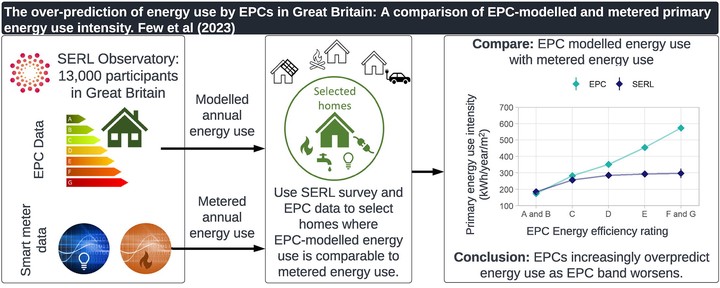The over-prediction of energy use by EPCs in Great Britain: A comparison of EPC-modelled and metered primary energy use intensity

Abstract
This analysis compares the difference between the Energy Performance Certificate (EPC)-modelled and smart-meter measured annual energy use on a like-for-like basis in 1,374 gas-heated British households from the Smart Energy Research Lab (SERL) Observatory. EPCs and metered energy use were converted to primary energy use intensity (PEUI) to provide a comparison of the same quantity for the first time. We show that EPCs predict significantly more energy use than metered in homes in Great Britain. EPC bands A and B show no statistically significant difference, but all other bands show a significant gap which increases as EPC rating worsens. The PEUI gap widens from −26 kWh/yr/m2 (−8%) for band C to −276 kWh/y/m2 (−48%) for bands F and G. Unlike previous research, we show that the difference persists in homes matching the EPC-model assumptions regarding occupancy, thermostat set-point and whole-home heating; suggesting that occupant behaviour is unlikely to fully explain the discrepancy. EPCs are a core tool in the residential energy sector, and the gap between EPC-modelled and metered energy use could have a significant impact on policy, research, and industry. Future research should investigate disaggregated components of energy use, the underlying thermal model, and assumptions regarding building characteristics.